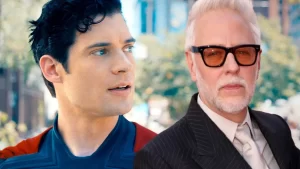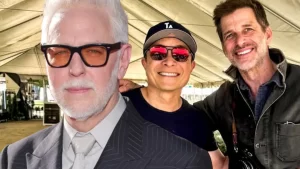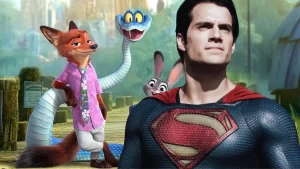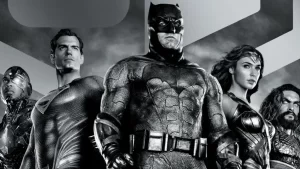Warner Bros. released the following information on the costumes and designs of the Justice League with Michael Wilkinson.
Also be sure to check out:
- Extended Justice League Plot Revealed
- Justice League Batman Description
- Justice League Superman Henry Cavill Description
- Justice League Wonder Woman Gal Gadot Description
- Justice League Jason Momoa Aquaman Description
- Justice League Ezra Miller The Flash Description
- Justice League Ray Fisher Cyborg Description
- Justice League: Alfred, Gordon, Silas Stone, Hippolyta, Mera Info
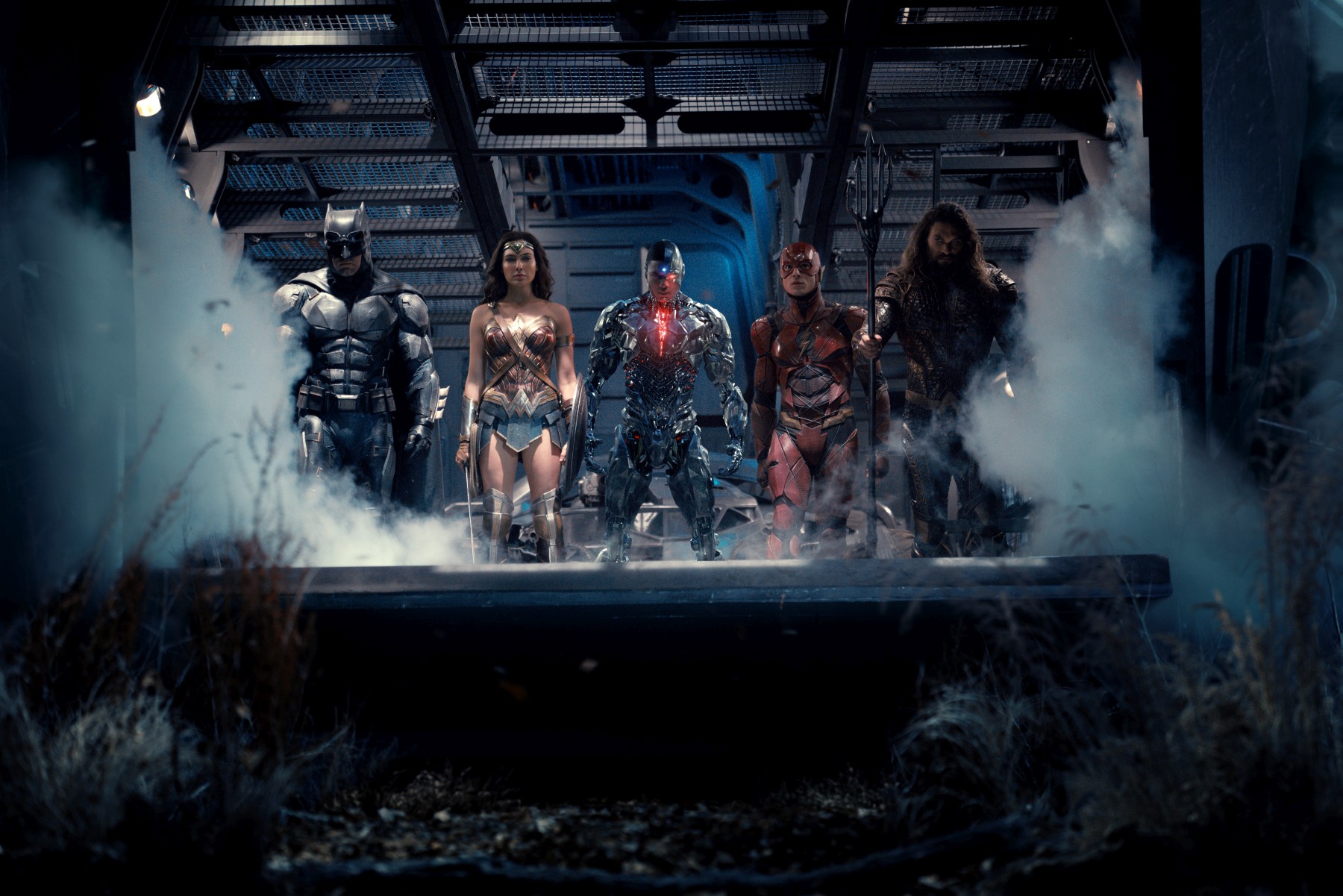
SUITING UP
To help define the look of the characters as they make the jump from the page to the screen, costume designer Michael Wilkinson was once again given the opportunity to bring depth and dimension to illustrations known the world over.
As always, Wilkinson and his team sought a balance that provided room for their own creativity while respecting the legacy of the original artists. His designs had to take into account practical matters such as stunts and weather, while also, he says, “infusing it all with a modernity that makes them relevant and relatable to audiences today. When I design these big superhero films, I really put pressure on myself to use new technologies that might not have been available even a year or two ago.”
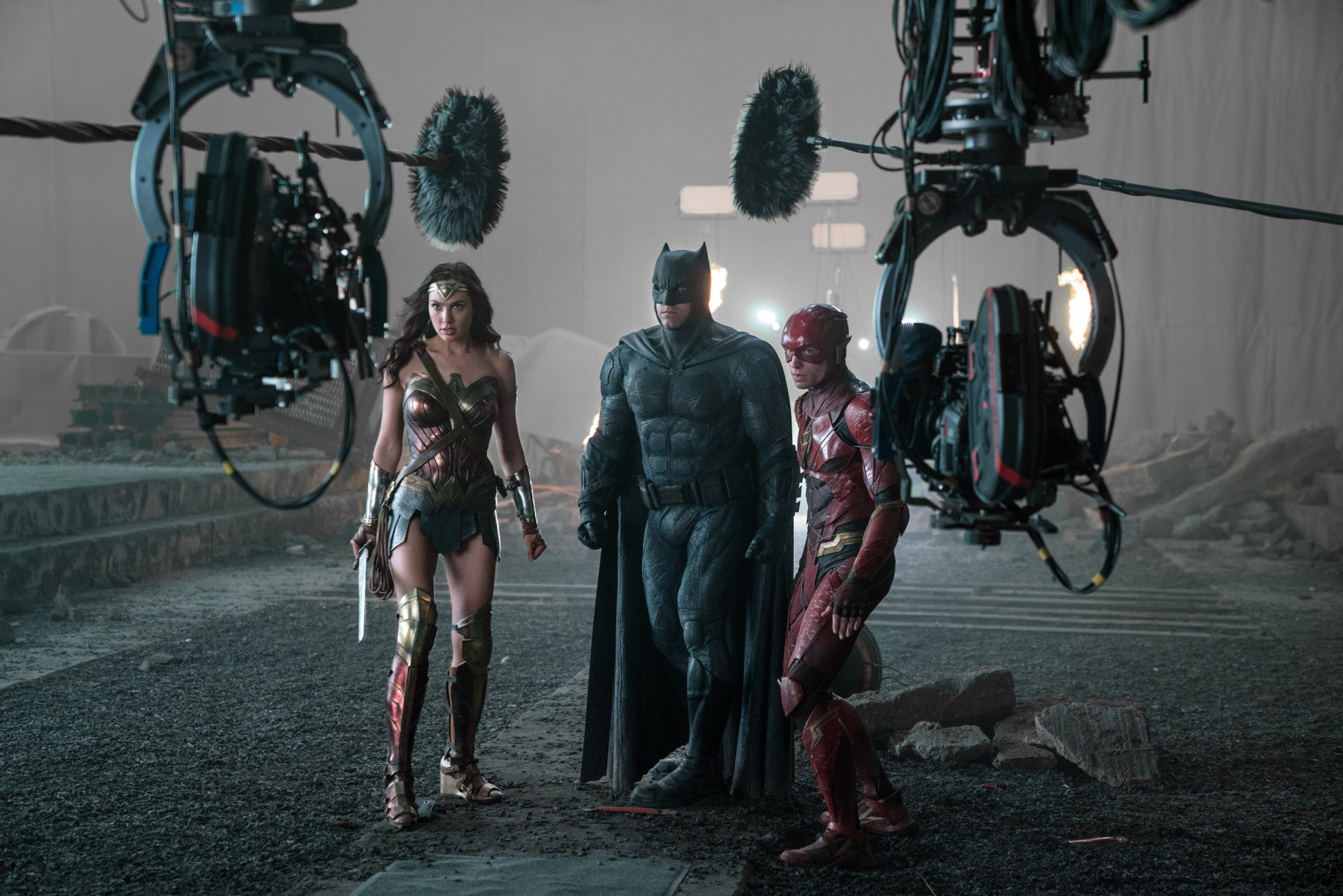
To that end, Wilkinson relates, “We used 3D rendering programs to create the illustrations of my designs, and then also used 3D digital technologies during our manufacturing process. We scanned our actors so we could apply the designs directly onto them, either as full-size mannequins or in the computer, and used 3D printers to make elaborate costume elements and molds. We cast costume elements in urethane, which we discovered can be made super rigid or super soft, depending on which part of the suit it’s being used for. We embedded the urethane elements in a stretch base fabric, and so we created a new type of fabric onto which a variation of colors and textures can be painted. Everything was pretty much sculptured from head to toe.”
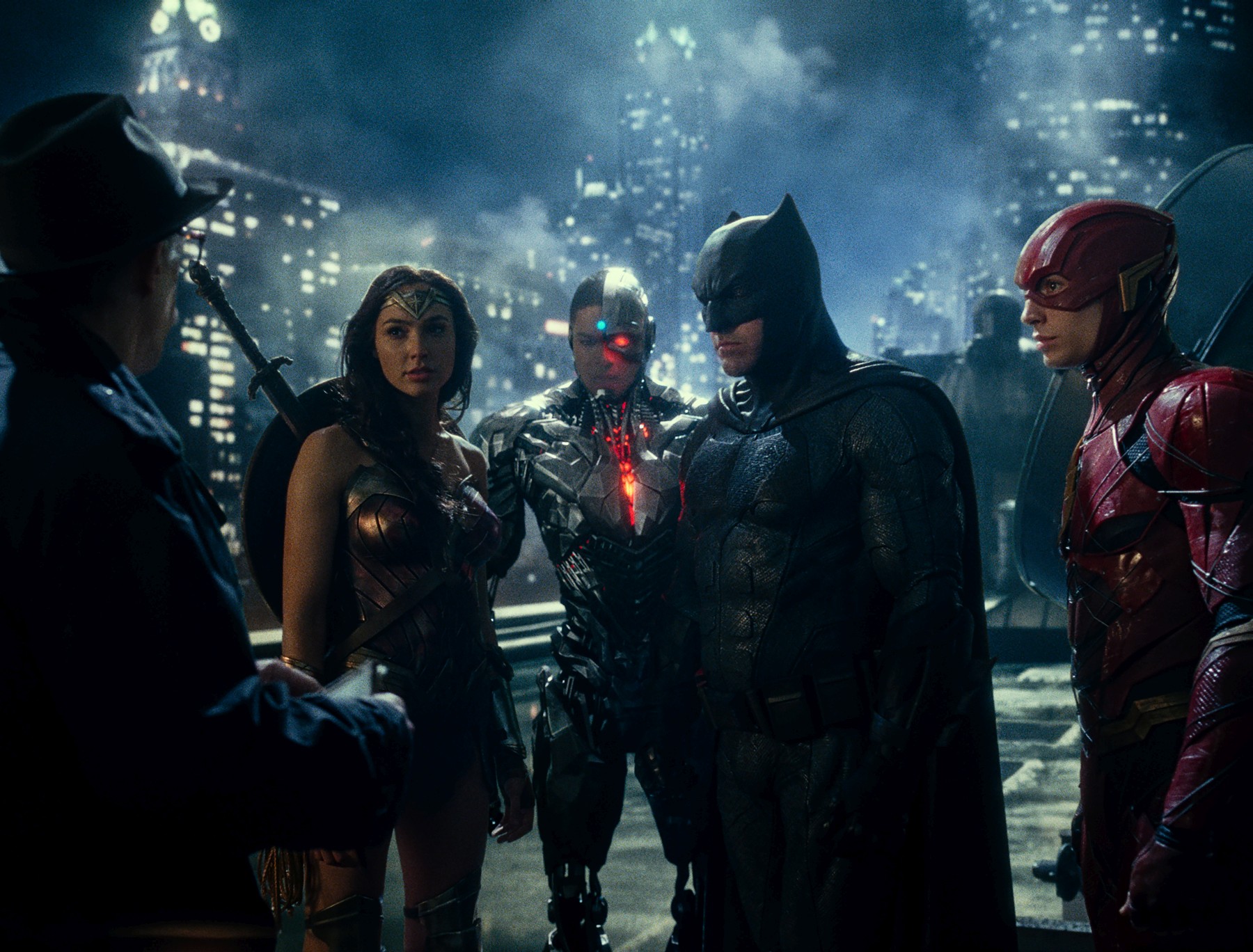
Wilkinson was responsible for the design of the iconic Wonder Woman costume, first seen in “Batman v Superman: Dawn of Justice,” and seen again recently in “Wonder Woman.” “In between our two contemporary films, you have the “Wonder Woman” standalone film, set in World War I, designed by Lindy Hemming,” he says. “Lindy and I spent a couple of weeks researching the world of Wonder Woman and coming up with a visual language for the Amazon race, so there would be a clear unity of vision between the films. Of course, because we are both creative people and have our own interpretations, there’s a slight difference in the look of the Amazons in the two films. And 100 years have passed between the period of that film and ours, so that needed to be reflected.”
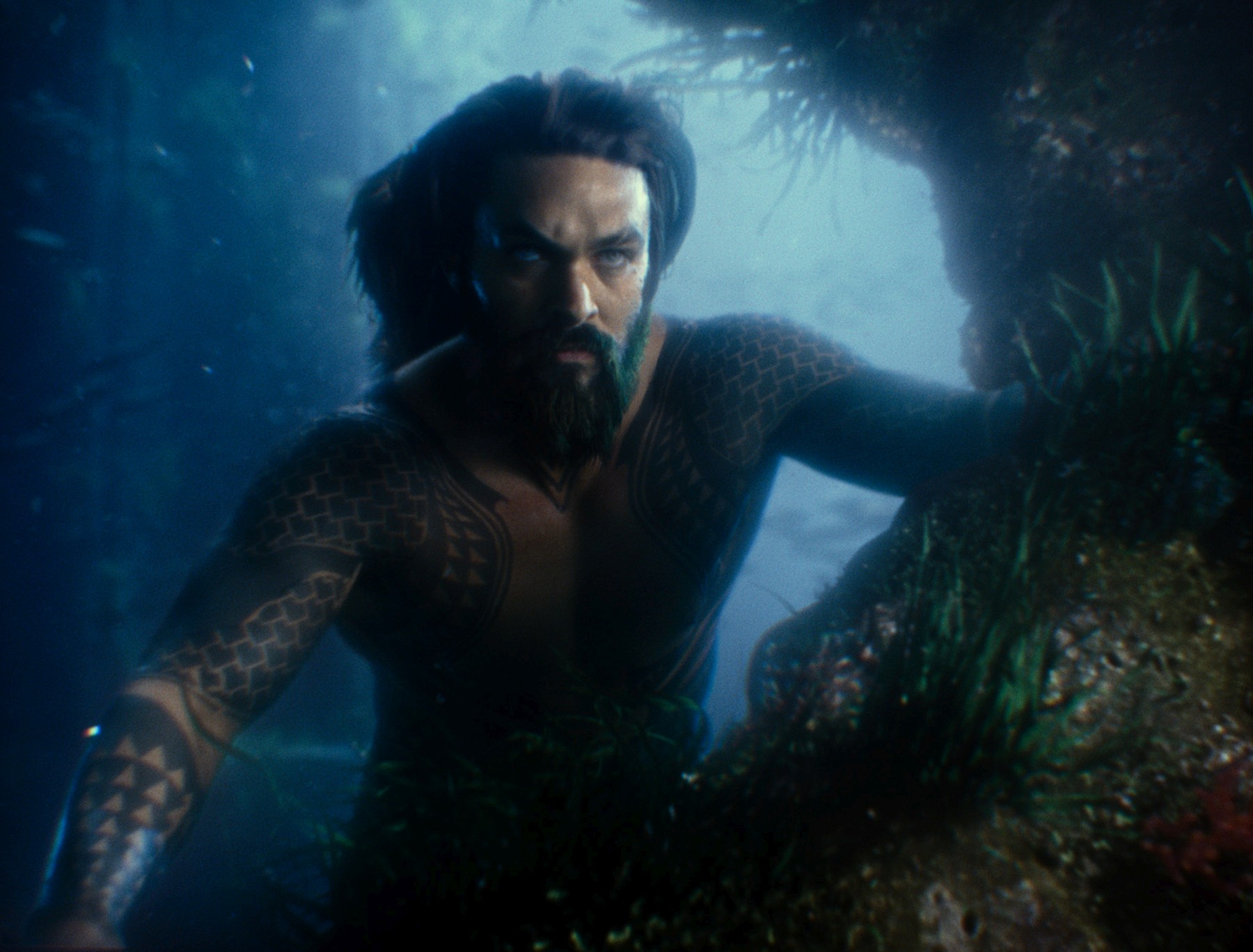
Wilkinson’s Wonder Woman costume is essentially the same in all three films, and there is definite visual continuity. “The costume changes very slightly in each film; there are tiny shifts of color and proportions,” notes Wilkinson. “In ‘Justice League,’ it’s a little bit more vibrant compared to ‘Batman v Superman,’ and has a little bit more glow, but the main iconic elements—the star and tiara, her lasso, the rig for her sword and shield, the eagle across the chest plate, and the WW in the belt—are all exactly the same.”
Fans will see a new Batsuit in the third act of “Justice League.” Referred to as the “tactical suit,” it was designed, says Affleck, “for Batman to wear for the higher-level battle, when we have to get more serious and deadlier. The suit is more armored and more tricked out.”
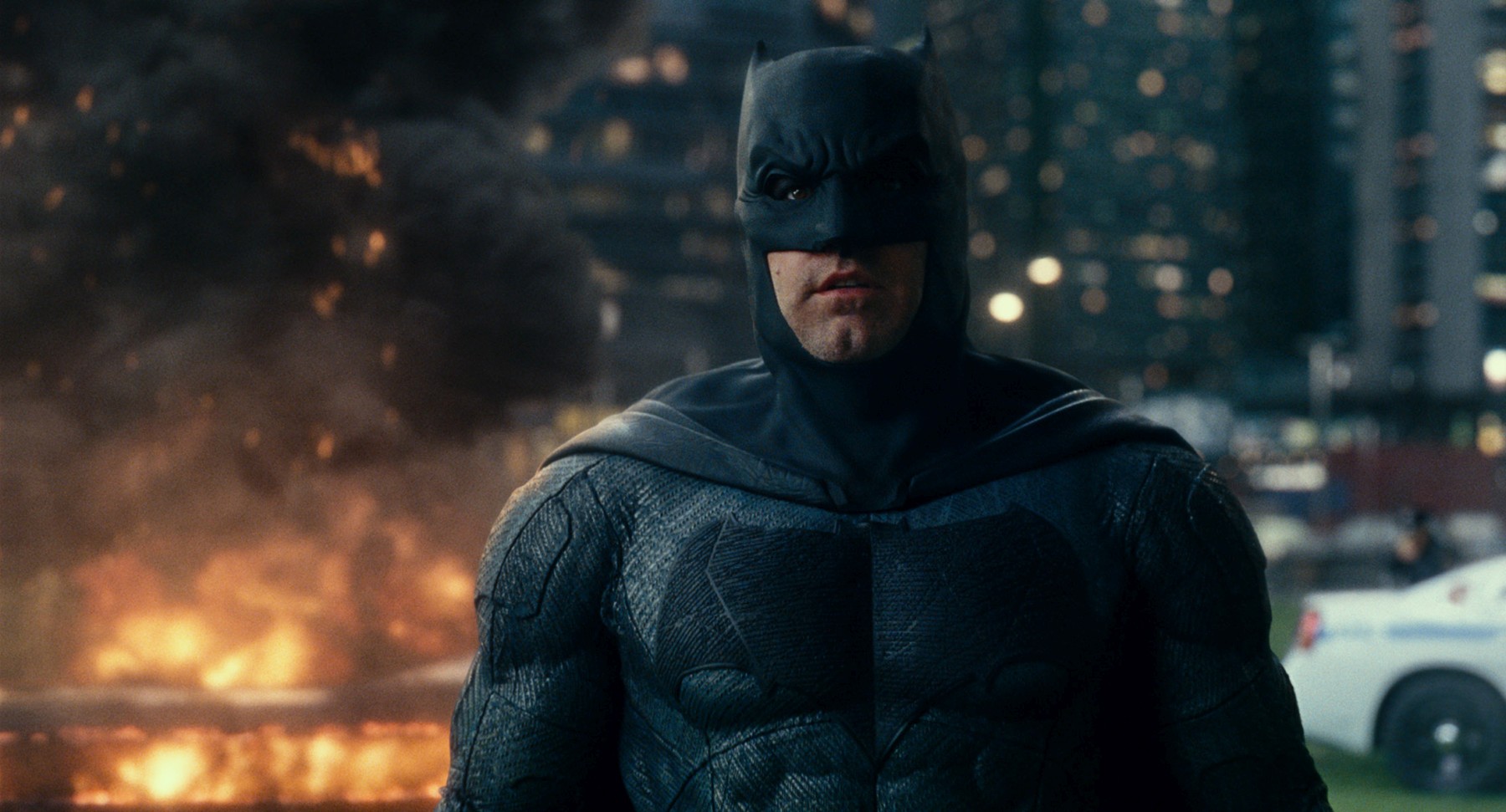
It was also the toughest costume to make. Wilkinson notes, “Because of the physicality of the Batman character, there was so much that Ben and his stunt doubles had to do…and to do it while creating this hulking silhouette that Zack was after, this tower of muscle and brawn. To achieve that and make the costume comfortable—not too hot, not too claustrophobic, and very flexible—was super-challenging.”
For the look of Arthur Curry, Wilkinson found inspiration in the actor himself. “My starting point was actually Jason’s own tattoos,” reveals Wilkinson. “He has quite a few, but the one on his forearm is particularly fantastic. I was inspired to fashion a new graphic language, and designed a unique tattoo that covered his entire body. It created this interesting connection between Jason’s own background and that of his character.” Aquaman’s armor then became a sort of 3D version of the tattoos. The “scale mail” was then infused with the colors of ocean lifeforms. “The paint work on the finished product has almost a bioluminescence,” Wilkinson says, “a lovely, iridescent quality that catches the light. But at the same time there is a sense of incrustation, that it has been underwater for so many thousands of years you could almost imagine plankton and small barnacles living on the armor.”
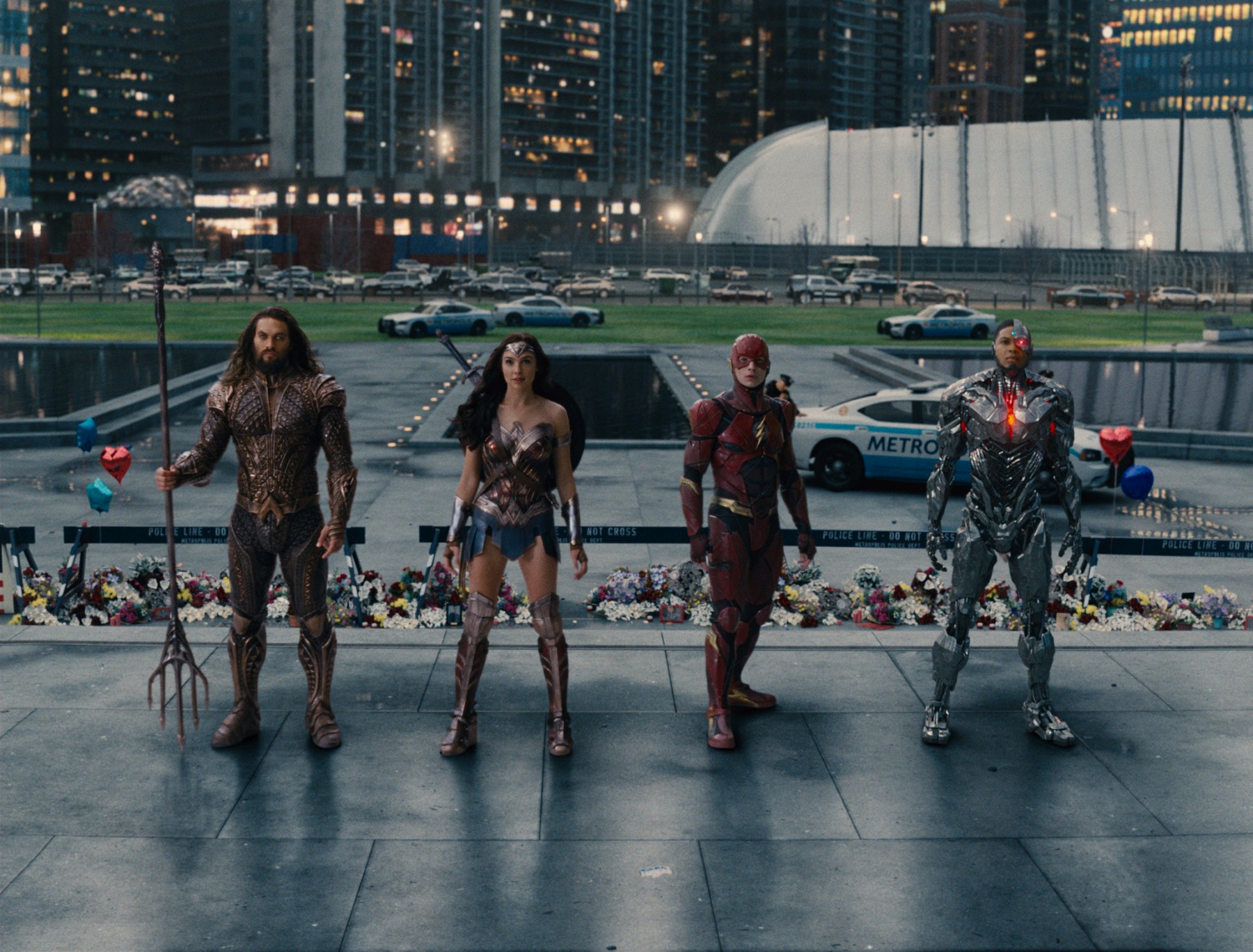
Unlike the other Super Heroes, whose costumes were inherited from their clan or are the product of wealth, The Flash has neither money nor heritage. He is just coming into his powers and struggling to adapt. Nevertheless, Wilkinson notes, “he’s extremely intelligent and great with technology. I had to think about how he would protect himself from the high speeds that he’s traveling and the resulting high temperatures. Barry’s young, a nerd; he would likely go online, research perhaps what NASA is doing, or look into vehicle and plane design to see how things move through space very quickly. He would probably have stolen a 3D printer to build his own parts. So, his costume has this fantastic blend of high technologies, like heat-resistant materials and prototype aerodynamic shapes, mixed with his grassroots skater punk aesthetic.”

Over 100 pieces were handcrafted to create the costume. “It’s made up of innovative new materials, but they’re scratched and busted-up, some of the panels are missing, or they’ve just got the undercoat. Then on top of that you have a complex system of wires that crisscross the body to create this incredible sort of matrix across the surface of the costume,” the designer expounds. “Zack really wanted it to feel like a prototype suit, the very first manifestation of The Flash putting together a look.”
Cyborg’s costume, too, would be a first. “As soon as Zack and I started talking about this character,” recalls Wilkinson, “it became clear pretty quickly that his costume would have to be a CG thing. Cyborg’s technology is extremely alien; if we had had to make the suit, then inevitably we would have had to resort to hinges and screws and ball sockets, things that we’ve seen before.”
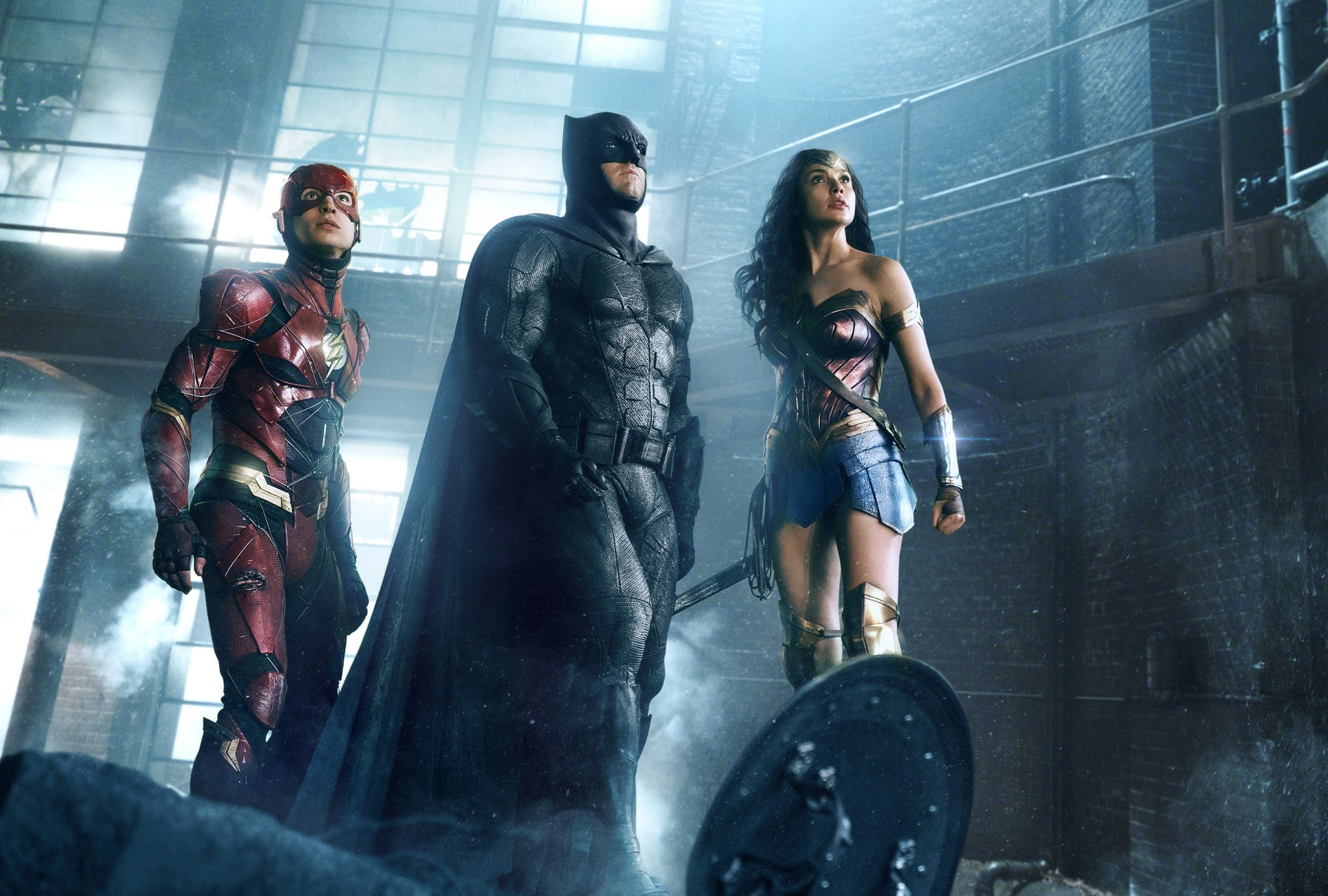
Wilkinson and his concept artists came up with an immensely detailed 3D model of Cyborg, defining the graphic language and textures of the alien world. They then handed it over to the visual effects department, who continued to develop Cyborg’s look under Snyder’s direction and guided by the actor’s performance. For the shoot, it was simply a matter of Wilkinson’s team sewing together Ray Fisher’s “pajamas”: the blue-dotted performancecapture suit that the skilled VFX artists would digitally replace, under the supervision of visual effects supervisor DJ DesJardin.

Wilkinson also turned his attention to Superman’s suit, marking his third go ‘round. “This time, you’re going to see a Superman that’s a little more lustrous,” says Wilkinson. “We developed an extremely beautiful metallic chromed under-suit that Henry wears, using materials and processes that weren’t available for previous versions of the costume. And for the over-suit, we created a mesh that’s a slightly bolder blue than the last film, so he really jumps off the screen in such a heroic way. And Zack had the fantastic idea of incorporating some Kryptonian scripts throughout the suit, so we wove some of that language, which we’d developed for ‘Man of Steel,’ through the S, across the bicep, through the belt, and in the cuff details. It adds that extra layer of meaning and detail for the audience.”
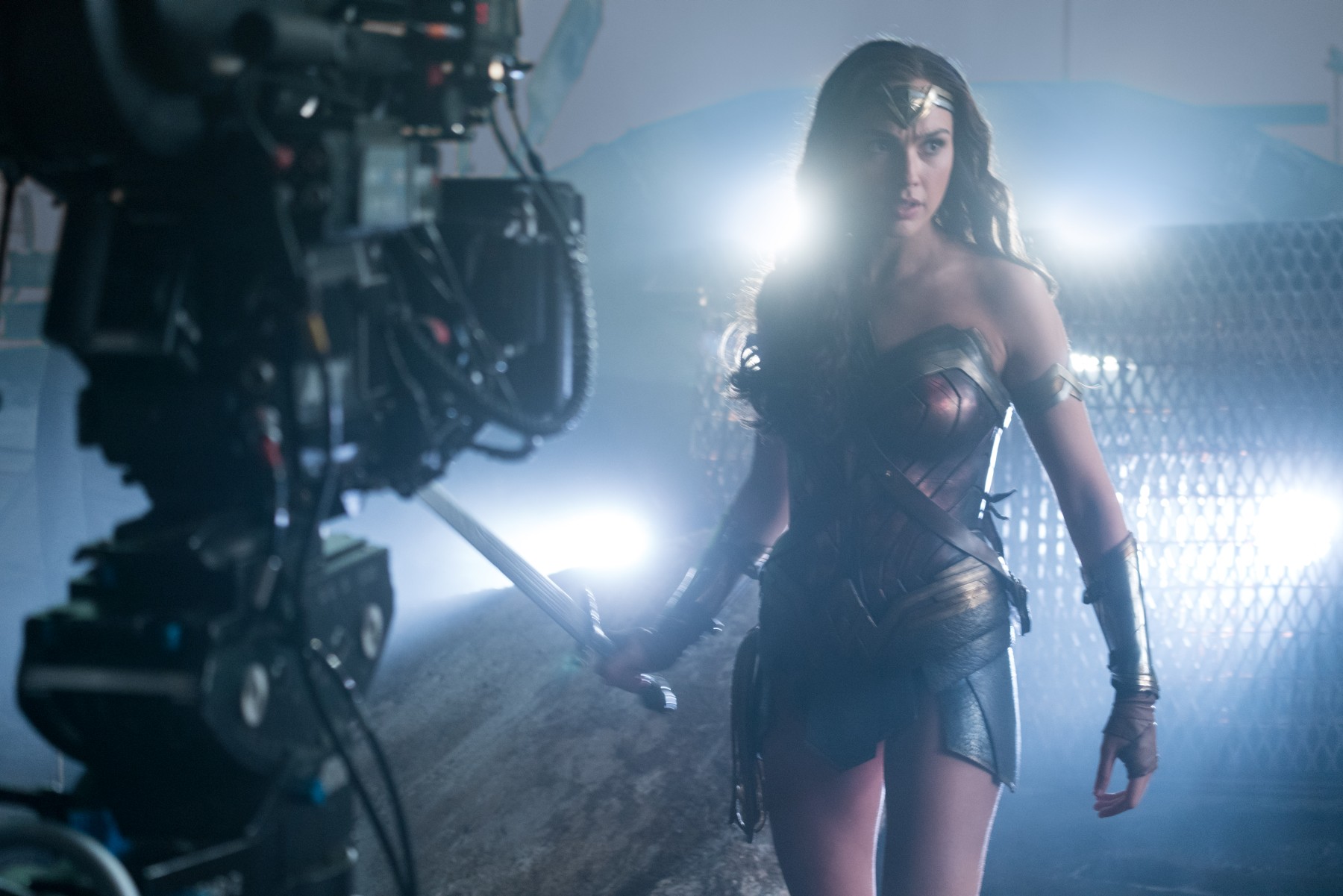
The suit was created by screen-printing a dimensional print onto a thin mesh that is itself the latest in fabric technology. “It’s even more sheer and beautiful and lustrous than what you saw in ‘Batman v Superman,’” Wilkinson asserts, “but super strong so that it didn’t fall apart when it was stretched tight. We also found amazing new printing inks that make a very dimensional, high-raised surface, and new paints that make it appear almost chromed. All of these little tweaks add up to a bolder, more impactful costume.”
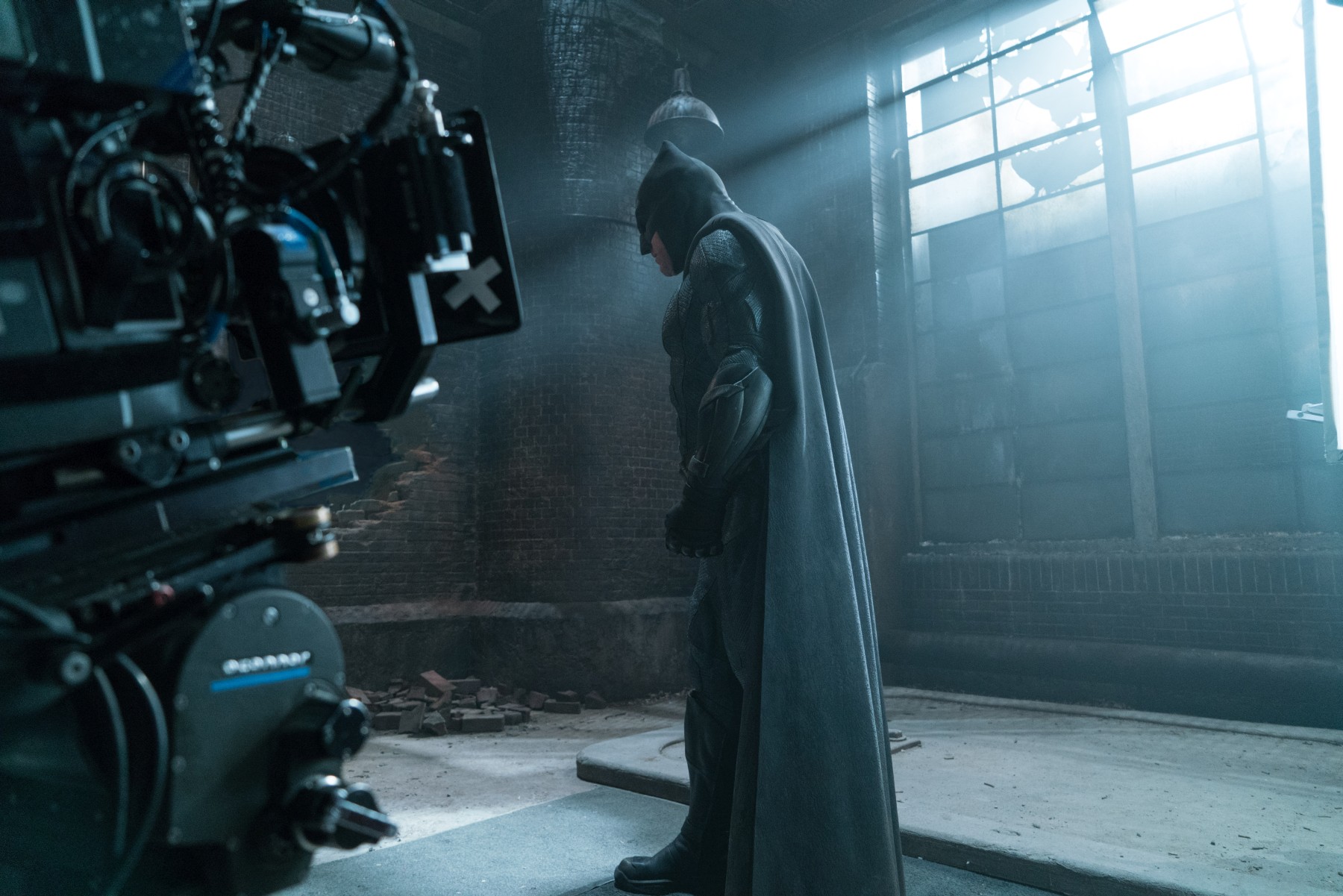
Techniques aside, perhaps the newest territory for the “Justice League” costume department was in housing the entire costume crew under one roof. Normally on a film of such scope and scale, each main character’s costume is made by a different manufacturing company, under the direction of the costume designer. But this time, the filmmakers did something they’d never done before.
“We did it all in-house,” Deborah Snyder explains. “We had hundreds of amazing artists and sculptors right there at the studio, so we could walk by and see what they were doing at any time. It gave Michael a huge amount of creative control, and, practically speaking, we were able to quickly repair something if it was damaged during a stunt.” The enormity of the task of manufacturing every costume in-house becomes more apparent when you consider there are six Super Hero costumes, each requiring multiples for stunt work and different scenes, as well as costumes for their six civilian alter-egos, plus more than 180 named characters, and 3,000 extras who appear in the film.

Having the ability to immediately address any costume issues came in handy for Wilkinson, due to the changing physiques of the main cast members. All trained extensively for their roles, building up more muscle as shooting progressed. Some of the actors gained as much as ten percent in body mass during production. This meant Wilkinson’s team had to keep the tape measure out and constantly adjust the costumes throughout filming. Finally, Wilkinson’s costumes also had to withstand the “tuning forks.” First developed for use on “The Matrix Revolutions,” they were introduced to the filmmakers by stunt coordinator Eunice Huthart. The device resembles a huge tuning fork, hence the name. The actor is strapped into the middle, and there is a counterbalance that enables him to mimic weightlessness, like being underwater, for example. Not only can he be rotated forward and backwards, but also on the y-axis. Just as Superman can fly, Aquaman can float.
What used to take up to seven stunt crew to operate, strides in technology—namely, high-speed robotic arms developed for use in the auto industry—significantly reduce the effort. Special effects supervisor Mark Holt assured the cast that the robots were not only safe, but actually safer than their human counterparts; in fact, the same software is used for robotic surgeries.
“In the old days, we would make a bespoke piece of equipment for every job,” admits Holt. “Now we can use these robots, literally called Safe Robot, which are so accurate that they can repeat a move every time within 0.2 of a millimeter.”
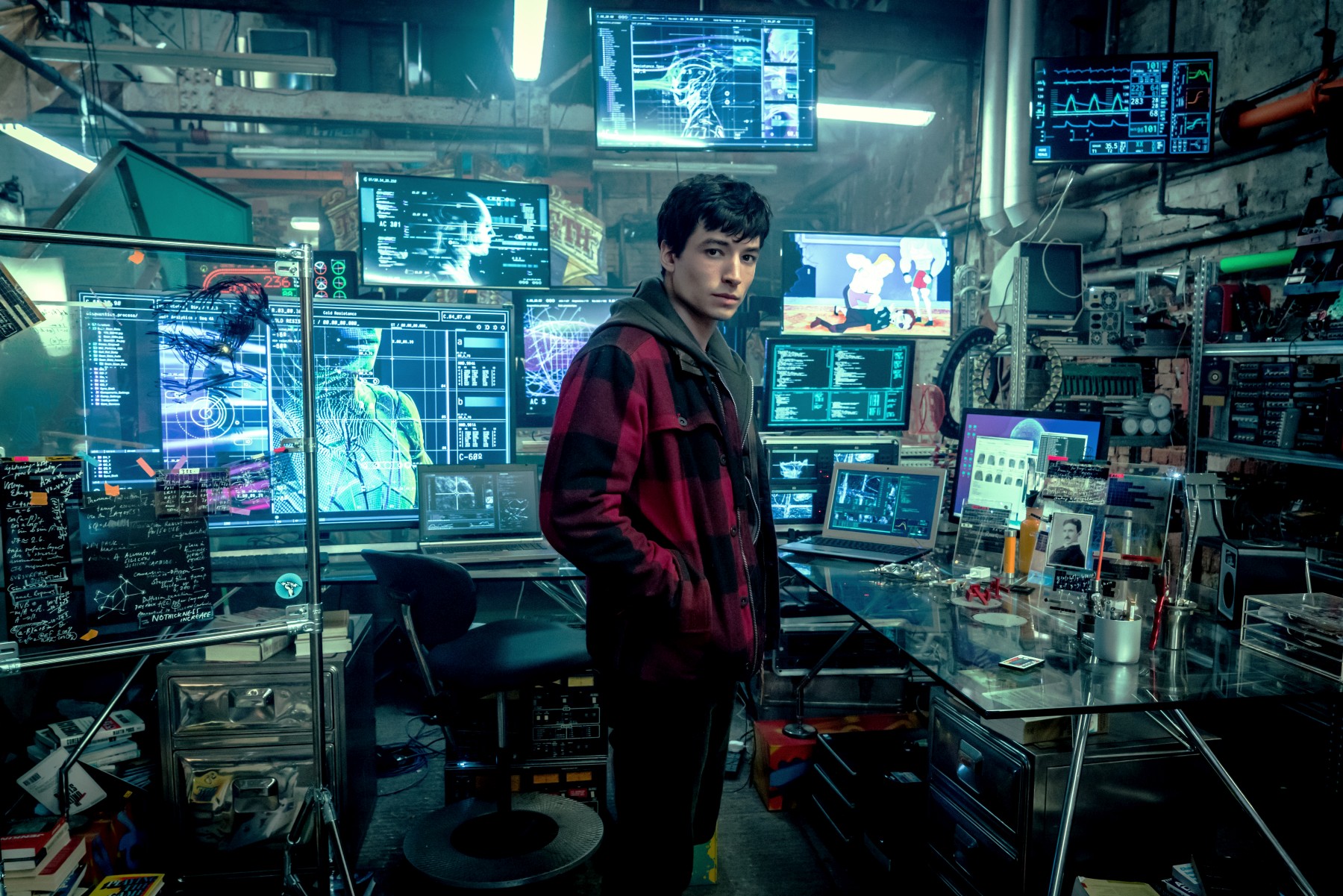
“Justice League” has a November 17, 2017 release directed by Zack Snyder, with the story by Chris Terrio and Zack Snyder, the screenplay by Chris Terrio and Joss Whedon, and stars Ben Affleck as Batman, Henry Cavill as Superman, Gal Gadot as Wonder Woman, Jason Momoa as Aquaman, Ezra Miller as The Flash, Ray Fisher as Cyborg, J.K. Simmons as Commissioner Gordon and Willem Dafoe an Atlantean, Nuidis Vulko.
Fueled by his restored faith in humanity and inspired by Superman’s selfless act, Bruce Wayne enlists the help of his newfound ally, Diana Prince, to face an even greater enemy. Together, Batman and Wonder Woman work quickly to find and recruit a team of metahumans to stand against this newly awakened threat. But despite the formation of this unprecedented league of heroes—Batman, Wonder Woman, Aquaman, Cyborg and The Flash—it may already be too late to save the planet from an assault of catastrophic proportions.



